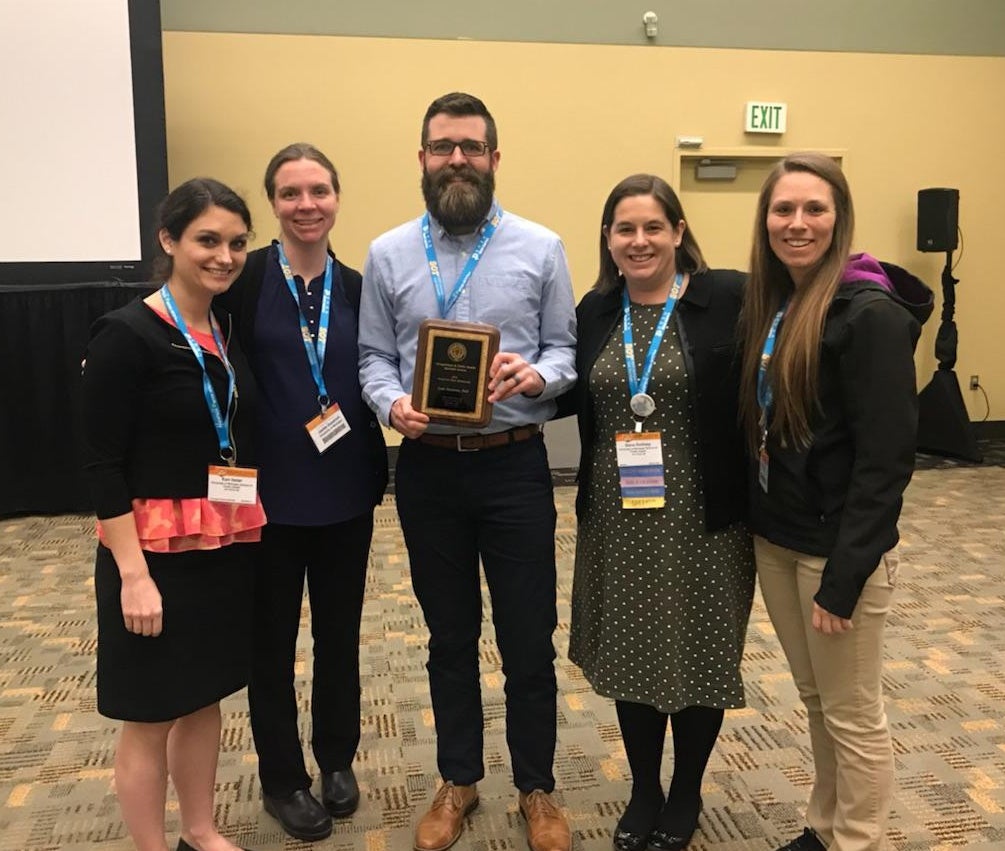
Luke Montrose, assistant professor in Public Health and Population Science (PHPS) at Boise State, has received the “Best Manuscript Award” from the Society of Toxicology (SOT), Occupational and Public Health Specialty Section. The award was presented to Montrose at the SOT conference in Baltimore on March 12.
Montrose received the award for his 2018 publication on the Michigan mother and infant pair (MMIP) study, which found a potential indicator of obesity risk in newborns whose mothers had been exposed to plastic-related chemicals – a nod to the developmental origins of health and disease, or DOHaD hypothesis.
“As an environmental toxicologist, I’m interested in studying the chemical exposures that occur early in life and discovering whether they result in a change in disease outcome over time,” said Montrose. “In the MMIP study, we focused on two chemicals that are so widespread they are present in trace amounts in nearly every person in the United States: Bisphenol-A (BPA) and phthalates.”
BPA and phthalates are chemicals that are used to make plastics, and they can contaminate food, beverages, cosmetics and other consumer goods that are stored in containers made with, or coated in, plastics. Phthalates are also used as an ingredient in some products, like shampoos and lotions.
The mothers in the MMIP study had been exposed to BPA and phthalates through their daily routines. What Montrose and his fellow researchers found was that higher levels of these chemicals in the mothers during early pregnancy corresponded with molecular changes in the infants just after birth – an indicator that may relate to obesity risk as the child ages.
“Many studies like MMIP have only been able to recruit pregnant women in their third trimester. This study recruited women in their first trimester,” he said. “This enabled us to take a snapshot of what was going on in the baby’s environment during a critical developmental time in terms of chemical exposures.”
The findings from the MMIP study pave the way for long-term research that may be able to link the risk of adult obesity with gestational exposures of BPA, phthalates and other chemicals.
Montrose is interested in the DOHaD hypothesis because he sees the wider implications for public health.
“It’s important that we start to think about the long term health consequences of living in an industrial society with relatively relaxed regulations,” he said. “On a yearly basis, industries produce thousands of new chemicals. However, of those new chemicals, we safety test a small percentage before they reach consumers.”
Montrose noted that many researchers have begun to ask if the DOHaD hypothesis could reveal a link between the rising number of chemical exposures and the rising incidence of chronic disease in the developed world.
Montrose is new to Boise State, joining Public Health and Population Science faculty in January. “I felt that Boise State and this department would be supportive of my multidisciplinary approach for translating basic science into community solutions for better health outcomes.”
Montrose will be following the MMIP study with a new research project at Boise State linking exposure to birth-time heavy metals with risk for childhood obesity.